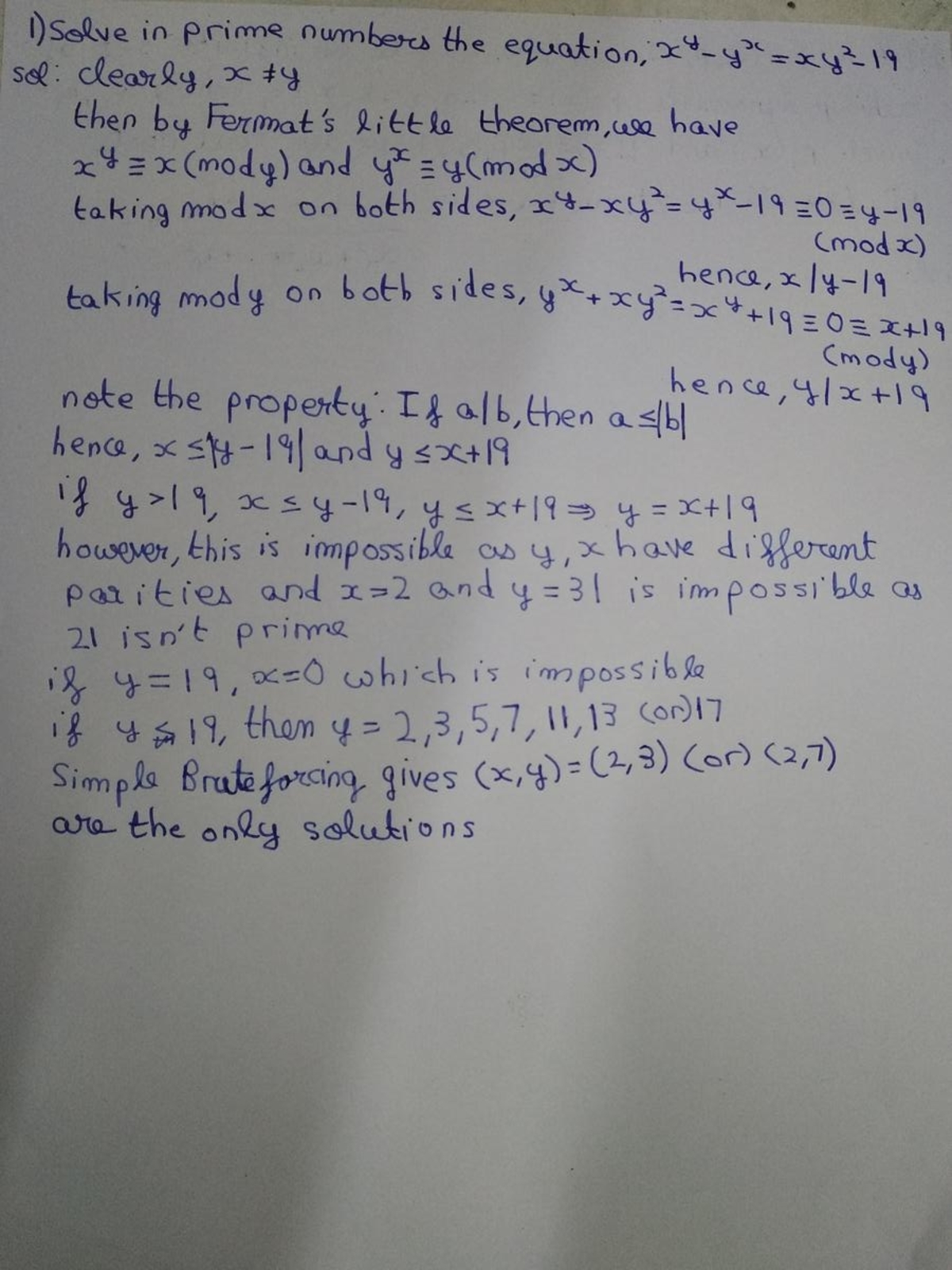Diophantine equation-problem 1
x y − y x = x y 2 − 1 9
Solve the equation above for primes x and y . Given that there are two solution pairs ( x 1 , y 1 ) and ( x 2 , y 2 ) , find the value of ( x 1 + y 1 ) ( x 2 + y 2 ) .
The answer is 45.
This section requires Javascript.
You are seeing this because something didn't load right. We suggest you, (a) try
refreshing the page, (b) enabling javascript if it is disabled on your browser and,
finally, (c)
loading the
non-javascript version of this page
. We're sorry about the hassle.
2 solutions

Widening out (a lot) from primes to all integers, there still are very few solutions to this equation. Just these two and ( x , y ) = ( 1 , − 5 ) or ( 1 , 4 ) , I think.
how are there only 2 solutions sounds a little weird
Did you conjecture this or prove it
Log in to reply
I do not have a full proof. Basically, if x = y , then unless both variables are quite 'small,' one of the first two terms (whichever has the greater exponent) dominates all the other terms and quickly prevents equality. So the search range for positive integer solutions can be restricted to a small set (eg. both x and y must be less than 1 0 ), and then checked by brute force.
Consider the case of y > x ≥ 3 : 3 4 − 4 3 = 1 7 , 3 5 − 5 3 = 1 1 8 , 4 5 − 5 4 = 3 9 9 , ... Once this difference becomes greater than y 3 > x y 2 > x y 2 − 1 9 , there is no need to check for further solutions. It is pretty well known that x y > y x for y > x once both variables are greater than e , so greater than 3 in the case of integers. Because of the terms on the right hand side, you have to check a bit farther than 3 . I think it would be sufficient to check until x y > 2 y x for y > x . This is where I need some help.
The cases of x = 1 , 2 or y = 1 , 2 can be handled separately, which end up leading to some solutions.
ok, i see] well thought
What did you do with the graph?
I plotted the solutions of f(x,y) =-19
oh the graph was a little confusing. Now I understood